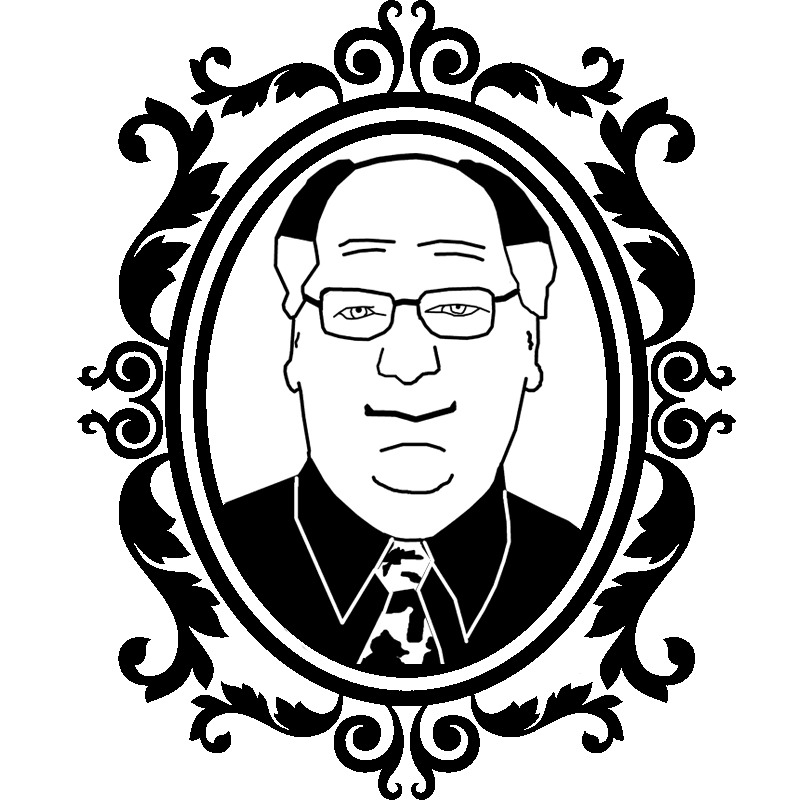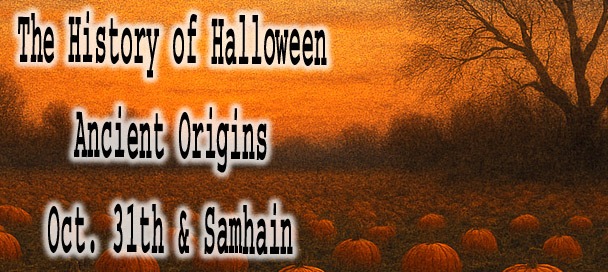💋 Lights, Camera... Scandal! Exploring Famous Hookers in Film

Famous Hookers in Film with a Red high heel on wet pavement under neon lights a symbolic nod to cinematic street life.
From gritty dramas to glitzy blockbusters, some of Hollywood’s most unforgettable performances come from actors portraying sex workers. Whether glamorized, tragic, or defiant, these characters have shaped public conversation and stirred controversy for decades. This article dives deep into the history of hookers in film, examining their roles, impact, and the real-life stories behind the fiction.
From gritty dramas to glossy blockbusters, cinematic portrayals of sex workers have lingered in the cultural imagination. This article surveys 15 of the most famous “hookers in film,” from Pretty Woman’s Vivian to Jane Fonda’s Klute and Jodie Foster’s haunting turn in Taxi Driver. It traces both fictional characters and real-life inspirations, and reflects on how these roles shaped conversations about gender, morality, and power. The piece argues that these portrayals remain culturally potent flawed, provocative, and often revealing.
The phrase “famous hookers in film” might evoke icons like Vivian in Pretty Woman or Satine in Moulin Rouge, but the cinematic world has long been fascinated by the complexities of sex work. These characters often serve as mirrors to society’s shifting values sometimes empowering, other times exploitative. Either way, their presence is impossible to ignore.
We’ll begin with the unforgettable women who brought these roles to life, then pull back the curtain on the real-life inspirations, male portrayals, industry facts, and cultural ripple effects. If you’ve ever been drawn to the allure, heartbreak, and defiance of famous hookers in film, this is your behind-the-scenes pass.
These roles (whether romanticized or traumatic) act as mirrors they force us to confront how film frames agency, victimhood, and the societal margins that define who gets seen and who gets erased.
🎞️ The 15 Best Famous Hookers in Film
Donna Reed shocked audiences in From Here to Eternity (1953) as Alma “Lorene,” a dance hall girl with a less-than-wholesome past. Known for her girl-next-door roles, Reed flipped expectations and delivered a layered, emotional performance that earned her an Academy Award. The film, a box office smash and Best Picture winner, helped cement the idea that even “respectable” actresses could portray hookers in movies with depth and dignity.
In Elmer Gantry (1960), Shirley Jones stepped far outside her musical comfort zone to play Lulu Baines, a minister’s daughter turned prostitute seeking revenge. Her tragic arc and fiery scenes with Burt Lancaster revealed a side of Jones that stunned critics and won her an Oscar. The film was a hit and remains a powerful showcase of moral hypocrisy and redemption among prostitutes in film.
Jamie Lee Curtis brought both warmth and street smarts to the role of Ophelia in Trading Places (1983). In a movie packed with social satire, Curtis stood out as the quick-witted prostitute who helps Dan Aykroyd rebuild his life. The R-rated comedy dominated the box office and became a holiday classic. Curtis’s performance helped evolve the image of famous hookers beyond the usual clichés.
Elizabeth Taylor dazzled in BUtterfield 8 (1960) as Gloria Wandrous, a conflicted New York call girl torn between love and self-worth. Her raw, emotional performance often cited as one of her most daring earned her the Academy Award for Best Actress. The film broke box office records and became a cultural touchstone in discussions about women’s agency and sexuality on screen.
Jane Fonda took a dramatic turn in Klute (1971), playing Bree Daniels, an intelligent, emotionally damaged call girl stalked by a killer. The role won her an Oscar and redefined her career. The film was both a commercial success and a critical darling, with Fonda’s portrayal standing as one of the most psychologically complex famous call girl in film of all time.
In Moulin Rouge! (2001), Nicole Kidman radiated tragic beauty as Satine, the dying courtesan who falls in love with a penniless writer. Her performance, nominated for an Oscar, combined old-Hollywood glamour with modern musical flair. The film became a global hit and turned Satine into one of the most iconic famous hookers in film, beloved for her heartbreak, grace, and unforgettable red dress.
Kim Basinger stunned audiences in L.A. Confidential (1997) as Lynn Bracken, a high-class escort with a Veronica Lake allure. Her restrained, emotional performance earned her the Oscar for Best Supporting Actress, while the film racked up nine nominations and critical acclaim. Bracken’s role added old-Hollywood elegance to the legacy of working girls in film.
In Taxi Driver (1976), Jodie Foster delivered one of the most haunting performances in cinema history as Iris Steensma, a 12-year-old prostitute in New York’s grim underbelly. Foster received an Oscar nomination at just 14 years old, and the film became a landmark of American filmmaking. Her portrayal added a disturbing yet unforgettable dimension to famous hookers in film.
Shirley MacLaine brought charm and spunk to Irma la Douce (1963), playing a beloved Parisian prostitute who falls for a policeman in this Billy Wilder comedy. Her Oscar-nominated performance balanced humor with vulnerability, and the film became an international hit. MacLaine’s Irma remains one of the most endearing hookers in film.
Mira Sorvino brought warmth, wit, and heart to Mighty Aphrodite (1995), playing Linda Ash, a bubbly prostitute whose life intersects with Woody Allen’s neurotic character. Her scene-stealing role earned her the Oscar for Best Supporting Actress, and the film became one of Allen’s most beloved comedies. Sorvino’s quirky, compassionate portrayal is among the most memorable hookers in film.
Marisa Tomei lit up the screen in My Cousin Vinny (1992) as Mona Lisa Vito, a wisecracking New Yorker whose past is playfully hinted at with risqué undertones. While not overtly a prostitute, the character’s suggestive background adds a subtle twist. Tomei won an Oscar for her role, and the film became a cult comedy classic. It’s a lighter, wink-and-nod entry among famous hookers in film.
Melina Mercouri enchanted audiences in Never on Sunday (1960) as Ilya, a cheerful Greek prostitute who lives by her own rules. The role earned her a Best Actress nomination and brought international fame to Greek cinema. With her bold spirit and infectious smile, Ilya remains one of the most joyful portrayals among hookers in movies.
Julia Roberts became America’s sweetheart in Pretty Woman (1990) with her star-making role as Vivian Ward, a witty, lovable prostitute hired by a wealthy businessman played by Richard Gere. The film was a global sensation, grossing over $460 million and redefining the romantic comedy genre. Her portrayal of the “hooker with a heart of gold” is arguably the most recognizable among all famous hookers in film.
Lynn Redgrave gave a touching performance in Georgy Girl (1966) as Georgina Parkin, a free-spirited young woman who briefly turns to prostitution in a moment of rebellion. The film earned Redgrave an Oscar nomination and helped capture the social shifts of the Swinging Sixties. Her nuanced performance offered a more understated take on famous hookers in film.
Explore the Biographies of Iconic Celebrities
🎭 Real Women, Real Stories: True Tales Behind Famous Hookers in Film
Long before fiction blurred the line between fantasy and reality, real-life sex workers were being reimagined on screen sometimes with accuracy, sometimes with flair. These performances dig deeper, peeling back the myth to reveal the raw, human truths behind famous hookers in film.
Charlize Theron’s transformation in Monster (2003) was nothing short of legendary. She portrayed Aileen Wuornos, a homeless prostitute and convicted serial killer, in a gritty, heartbreaking role that earned her the Academy Award for Best Actress. The film grossed over $60 million worldwide and is still praised for its emotional weight and unflinching realism making it one of the darkest entries among famous hookers in film.
In 2024’s Anora, Mikey Madison played a Brooklyn escort swept into a whirlwind marriage with a Russian oligarch’s son. While not based on one person, the Oscar-winning Best Picture drew directly from the lives of real New York sex workers. Directed by Sean Baker (The Florida Project), the film blends romantic chaos with socio-economic commentary, further grounding famous hookers in film in lived experience.
The Client List (2010), a TV movie starring Jennifer Love Hewitt, was inspired by a 2004 prostitution scandal in Odessa, Texas. As Samantha, a struggling mother who secretly works at a massage parlor, Hewitt earned a Golden Globe nomination. The role sparked both public discussion and a hit Lifetime series, adding a suburban spin to soccer mom.
Frida Farrell blurred fiction and reality in Selling Isobel (2016), starring as herself in a harrowing reenactment of her real-life abduction and sex trafficking ordeal. The low-budget indie received critical praise for its bravery and honesty. Farrell’s firsthand performance gave new meaning to famous hookers in film, turning survival into art.
Horror met exploitation in Call Girl of Cthulhu (2014), where Melissa O’Brien’s character is loosely based on an unnamed sex worker said to have inspired H.P. Lovecraft’s writing. While exaggerated for comedy and cosmic horror, the role pays surreal homage to real women whose names history forgot, bringing myth into the fold of selling sex in film.
In Dance with the Devil (1999), Miranda Richardson portrayed Ruth Ellis the last woman executed in Britain. Ellis, a club hostess with ties to prostitution, was entangled in a violent relationship that ended in tragedy. Richardson’s BAFTA-nominated performance captured the desperation and grit that mark the truest famous hookers in film.
Heidi Fleiss: Hollywood Madam (1995) dramatized the life of one of L.A.’s most notorious figures. Jamie Singer took on the role of Fleiss, the business-savvy young woman who ran a high-profile prostitution ring catering to celebrities. Though a TV movie, the film sparked widespread conversation about sex, power, and privacy in the media spotlight.
Candice Bergen stepped into high heels in The Mayflower Madam (1987), portraying Sydney Biddle Barrows a blueblood turned escort service owner in Manhattan. Based on Barrows’ memoir, the film offered a more upscale view of the profession and helped widen the lens through which we view famous hookers in film.
Finally, no real-life list would be complete without Xaviera Hollander, author of The Happy Hooker. While her story inspired books and a trilogy of films (The Happy Hooker in 1975 being the most notable), the portrayals are as cheeky as they are candid. Hollander’s legacy brought sex-positivity to the mainstream and carved out a space for the unapologetic famous hookers in film trope that thrives to this day.
Explore the Biographies of Iconic Celebrities
🎬 Men of the Night: Male Perspectives on Famous Hookers in Film
While women have dominated the cinematic spotlight when it comes to portrayals of sex work, Hollywood hasn't ignored the male experience. From gritty dramas to absurd comedies, male prostitutes both fictional and real offer a complex and often overlooked lens into the world of hookers in film.
Richard Gere redefined sex appeal in American Gigolo (1980) as Julian Kaye, a suave Los Angeles escort whose polished exterior hides deep emotional isolation. The neo-noir movie became a box office hit and helped launch Gere into superstardom. Kaye's world of wealthy clients, fashion, and danger added sophistication and suspense to the conversation about sex workers in film.
Midnight Cowboy (1969) broke ground by centering its story on Joe Buck, a naïve Texan who believes he can make it big as a male prostitute in New York City. Played by Jon Voight in an Oscar-nominated role, Buck’s descent into loneliness and poverty was raw and unflinching. The film made history as the first X-rated movie to win Best Picture and remains a cornerstone in discussions of famous hookers in film.
In Gus Van Sant’s My Own Private Idaho (1991), River Phoenix and Keanu Reeves play street hustlers navigating love, identity, and survival. Loosely inspired by Shakespeare’s Henry IV, the film was critically acclaimed for its poetic style and groundbreaking LGBTQ+ themes. Phoenix’s performance in particular added emotional depth to the portrayal of male sex work in cinema.
Joseph Gordon-Levitt shocked audiences in Mysterious Skin (2004) with his haunting performance as Neil McCormick, a teenage hustler trying to cope with childhood trauma. Based on the novel by Scott Heim, the film gained cult status for its unflinching honesty and exploration of identity, trauma, and memory expanding the emotional range of famous hookers in film.
Rob Schneider took the opposite route in Deuce Bigalow: Male Gigolo (1999), playing a hapless fish tank cleaner who stumbles into sex work. The raunchy comedy was a surprise box office hit and even spawned a sequel. While more slapstick than sincere, it still marked a rare comedic entry in the list of famous hookers in film.
In L.I.E. (2001), Paul Dano gave a raw early performance as Howie Blitzer, a teen dealing with loss, neglect, and exploitation. The film’s dark subject matter and moral ambiguity challenged audiences, with Howie’s interactions with a predatory adult touching on unsettling truths beneath the surface of famous hookers in film.
🔍 Real Men, Real Scandals True Stories Behind Famous Hookers in Film
Leonardo DiCaprio stunned critics in The Basketball Diaries (1995), portraying poet and punk Jim Carroll, who turns to male prostitution to support his drug addiction. Based on Carroll’s gritty memoir, the film captured the spiral of self-destruction and remains one of DiCaprio’s most powerful early roles. It also brought a new level of urgency to stories of real famous hookers in film.
Scotty and the Secret History of Hollywood (2017) pulls back the curtain on Tinseltown’s golden era. Scotty Bowers, a WWII vet, ran a covert prostitution ring from a gas station, catering to A-list celebrities while keeping their secrets. The documentary, based on Bowers’ memoir Full Service, offers a scandalous but heartfelt look at Hollywood’s hidden history and its very real famous hookers in film.
In Mishima: A Life in Four Chapters (1985), Ken Ogata plays Yukio Mishima, the legendary Japanese author whose controversial life included episodes of male prostitution. This stylized biopic blends fact and performance art to explore Mishima’s inner demons, sexuality, and obsession with beauty. His story adds international depth to the conversation about real-life hookers.
Explore the Biographies of Iconic Celebrities
🌍 More Than a Role: The Cultural Impact of Famous Hookers in Film
The portrayal of sex workers in cinema has always sparked debate shaping, reflecting, and often challenging society’s views on morality, power, and gender roles. Across decades, famous hookers in film have served as more than plot devices they’ve become cultural flashpoints.
In the post-war era, characters like Donna Reed’s Alma in From Here to Eternity subtly hinted at sex work, sidestepping censorship while laying the groundwork for more direct portrayals. By the 1960s and ’70s, with Elizabeth Taylor in BUtterfield 8 and Jane Fonda in Klute, the industry began treating sex workers as complex, fully realized characters flawed, intelligent, and deeply human. These roles mirrored the rise of second-wave feminism and challenged outdated tropes about purity and shame.
As Hollywood pushed further, the 1980s and ’90s introduced a glossier, more stylized vision. Julia Roberts’ iconic Vivian in Pretty Woman rebranded the prostitute as a lovable heroine, fueling both box office success and fierce feminist critique. While some argued it romanticized exploitation, others saw it as a step toward empathy. These competing views have become central to discussions around famous hookers in film, especially in media studies and gender theory circles.
The 21st century has only deepened the conversation. Films like Monster, Mysterious Skin, and Selling Isobel brought raw realism to the screen, focusing on survival, trauma, and agency. Meanwhile, international portrayals from Never on Sunday to Mishima prove that this is a global cinematic archetype, not just a Hollywood construct.
Whether glamorized or gritty, comedic or tragic, the cultural legacy of famous hookers in film continues to evolve challenging viewers to confront their own biases and expanding the role of sex workers in storytelling.
📊 Closing Facts on Prostitution in the U.S. and Worldwide
FBI Estimates on Child Prostitution in the U.S.
According to the FBI and the National Center for Missing & Exploited Children, over 100,000 children are believed to be coerced into prostitution each year in the United States. Although hard data remains scarce, this figure underscores the hidden and deeply troubling scale of child exploitation.
Source: Wikipedia: Prostitution in the United States

Official seal of the Federal Bureau of Investigation (FBI), used in reference to national crime statistics.
Annual U.S. Prostitution Arrests
The FBI reports that between 70,000 and 80,000 prostitution-related arrests occur annually in the U.S. About 70% involve female sex workers and madams, 20% involve male sex workers and pimps, and 10% are clients. The financial cost to taxpayers is estimated at $200 million per year.
Source: HG.org: Prostitution in the United States
Global Legal Status of Prostitution
Prostitution is legal or partially decriminalized in 86 countries, including Germany, the Netherlands, and New Zealand. Five countries such as Belgium and regions of Australia have fully decriminalized it. Meanwhile, 102 countries still consider prostitution illegal. In the U.S., Nevada remains the only state with legal, licensed brothels operating in six counties.
Source: A-Mark Foundation
High Risks for Prostitutes
Sex work is statistically one of the most dangerous occupations in the United States, with a mortality rate of 204 per 100,000 workers surpassing even commercial fishing in Alaska. Prostitutes also face regular non-lethal assaults, averaging one per month, often without access to legal protection or recourse.
Source: HG.org: Prostitution in the United States
Global Scale and Trafficking
Worldwide, an estimated 52 million individuals work in the sex trade, with 80% being female. The United Nations reports that roughly 3.8 million adults and over 1 million children are trafficked into prostitution annually, revealing the vast, systemic scale of exploitation across borders.
Source: IUSW.org: Sex Worker Statistics
Closing Note
While the image of sex work in cinema often leans toward glamor and fantasy, the real-world sex trade paints a very different picture one marked by violence, poverty, and systemic abuse. From the 100,000 U.S. children at risk each year to millions trafficked worldwide, the statistics lay bare a human rights crisis. Legal models in Germany, New Zealand, and parts of Nevada attempt regulation and protection, but the ongoing global trafficking epidemic and extreme occupational risks highlight the urgent need for structural reform, public awareness, and support systems. Behind every portrayal of famous hookers in film lies a complex and often heartbreaking reality that cannot be ignored.
🎬 Curtain Call: Why Famous Hookers in Film Still Matter
From Oscar-winning dramas to guilty-pleasure comedies, the portrayal of sex workers has left an indelible mark on cinema. These characters whether inspired by real people or crafted entirely for the screen offer more than just shock value or sensuality. They reveal our shifting views on morality, gender, class, and human resilience. Whether it’s Julia Roberts’ fairy-tale charm, Jane Fonda’s psychological depth, or Charlize Theron’s devastating realism, famous hookers in film have continually challenged audiences to look deeper.
The best portrayals transcend stereotype. They give voice to the voiceless, complicate easy judgments, and mirror a world where survival often demands sacrifice. As film continues to evolve, so too does the portrayal of sex work from glossy Hollywood fiction to raw indie realism and even documentary truth.
In telling these stories, cinema doesn’t just entertain it educates, provokes, and sometimes even inspires change. And as long as society wrestles with the realities of the sex trade, famous hookers in film will remain central to that conversation on screen, in discourse, and in the culture at large.
🗣️ Why It Still Matters
These characters refuse to be mere background or moral warnings. Over time, they have become loci for debate about representation, exploitation, and voice. Even today, filmmakers revisit or subvert them to challenge norms, interrogate power, and ask: who gets to tell these stories, and at what cost?

ML Lamp is the owner of Kilroy Was Here. After his 20 years of working in Las Vegas in the entertainment promotions field, Mr. Lamp retired in 2002 from his job to pursue his passion for collectibles. Now as a guest speaker and author he’s living the dream, and sharing his warmth with You.





